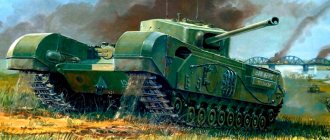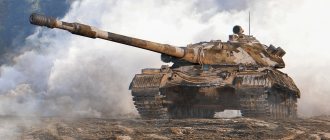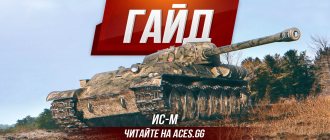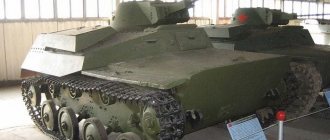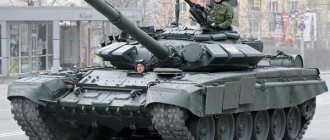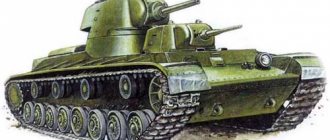In the case of Soviet armored vehicle designers, it is difficult to say that their names have been undeservedly forgotten. One way or another, it is known under whose leadership certain tanks, self-propelled artillery mounts and wheeled armored vehicles were created. In this regard, Soviet tank building looks more honest than many foreign tank schools.
It is well known who created the T-34, but try to find the chief designer of the Pz. Kpfw. III, Medium Tank M4 or Cromwell. In the history of Soviet tank building there are several dozen names of those who either headed design teams or were the leading engineer of the vehicle (it is the leading engineer who is actually the author of the tank). Another question is that some figures, often key ones, got lost against the background of more famous designers.
Nikolai Fedorovich Shashmurin belongs to this category. Not everyone knows the name of this man, but his contribution to Soviet tank building is enormous. This talented design engineer was involved with most of the heavy tanks created in Leningrad. In just a few decades, Shashmurin participated in one way or another in the development of several dozen combat vehicles. His main achievement was heavy tanks, or, as he called them, tanks of extreme parameters. The IS-1 and IS-2 heavy tanks were created by him as a leading engineer, that is, Shashmurin is the author of these iconic vehicles. At the same time, Shashmurin is not as famous as, for example, Zh. Ya. Kotin, with whom he had an extremely difficult relationship.
Classify the experimental sample
At first they wanted to use the tank itself in parades, but then they decided not to show it off again. Firstly, for reasons of secrecy - despite all the shortcomings, the car had a number of interesting solutions. And secondly, so that a lone tank does not confuse observers, raising natural questions, where is the second, third, and so on: “Why didn’t you pull a heavy tank in the Soviet Union?”
Therefore, the car was sent to the Academy of Armored Forces to introduce listeners to failed and flawed high-tech. At the same time, using the tank’s engine life to train people.
The designer who created the IP
The beginning of the Great Patriotic War changed plans for the development and production of heavy tanks. The KV-4 and KV-5 very quickly went into oblivion, although in fact Zeitz's group continued to work on the KV-5 until August 1941. The Kirov plant concentrated on the production of the KV-1. But at the same time, the topic of KV-3 was not closed - now they planned to develop it in Chelyabinsk, at ChTZ. On June 30, 1941, an order was issued at the Kirov Plant, according to which 18 design engineers, including Dukhov, Pavlov and Shashmurin, were transferred to Chelyabinsk.
Together with the designers and their families, they loaded the long-suffering KV-3 onto the train, which they never managed to fully assemble. However, soon there was no time for the KV-3. ChTZ, renamed ChKZ in the fall of 1941, soon became the only site where the KV-1 was produced. Shashmurin, along with the rest of the Leningrad designers, joined the team of the ChKZ design bureau, which was soon renamed SKB-2.
Gearbox “group 21-212”, developed by Shashmurin for the KV-1s. It turned out to be the most successful and was used as a production tank.
© warspot.ru
The end of 1941 - the beginning of 1942 was a time when various initiative projects were developed. This also applied to ChKZ. For example, they designed a “raid vehicle” based on the T-34, the maximum speed of which reached 70 km/h. Shashmurin developed the “People’s Malice” wedge heel (alas, no documentation on it has survived). A combat vehicle weighing 2.5 tons was supposed to have machine gun armament, a power plant of two starting engines of the ChTZ S-65 tractor, armor 20-25 mm thick and a crew of two people.
They did not begin to build the tankette, but in the spring of 1942, Shashmurin found a job in his direct specialty. The fact is that at the beginning of 1942 there were massive complaints about the KV-1 gearboxes. This was due to both a decrease in the quality of production and the overload of the machine, which already weighed nearly 50 tons. On March 20, 1942, GKO decree No. 1472 was issued, which obligated to improve the quality of engines and gearboxes installed on the KV-1. But in practice, it was at this time that work began on the tank, which later became known as the KV-1s.
The first experimental KV-1s. In parallel with him, Shashmurin had to work on another tank.
© warspot.ru
At first there was talk of a slightly lighter KV-1 with a more powerful engine and a new gearbox. To be on the safe side, work was started using two gearboxes. The first checkpoint “group 12-21” was created by F. A. Marishkin. The second checkpoint, known as “group 21-212,” was developed by Shashmurin. Nikolai Fedorovich made his gearbox, already an eight-speed one, on the basis of a gearbox that he had once created for the T-220. By that time, he was already working at the experimental plant No. 100 organized at ChKZ. Tests, which began on the 20th of April 1942, showed that Shashmurin’s gearbox was more successful. She was finally chosen in mid-June.
KV-13 (aka IS-1) is the first tank for which Shashmurin became the leading engineer. Nikolai Fedorovich did not like this car, believing that it was necessary to make a normal heavy tank.
© warspot.ru
In practice, the KV-1s, of which M. F. Balzhi became the leading engineer, was significantly different from what was originally intended. In addition to the new gearbox, the tank received a lightweight hull, the configuration of which has changed slightly compared to the KV-1. In addition, the chassis has changed significantly - due to its alteration, it was also possible to lighten the tank. Finally, the tank received a new turret, the design of which was similar to another Chelyabinsk development - the KV-13.
This vehicle, the development of which began in March 1942, was a radical replacement for the KV-1. They decided to combine the armor protection of a heavy tank, as well as the mobility and dimensions of a medium tank. At the same time, the KV-13 (referred to as IS-1 in the documents of plant No. 100), whose leading engineer was N.V. Tseits, remained a heavy tank. It so happened that they decided to slow down the development of this vehicle in favor of the KV-1s; in addition, on July 3, State Defense Committee decree No. 1958 “On T-34 and T-70 tanks” was signed, according to which the production of the T-34 was organized at ChKZ. As a result, the fate of the KV-13 was in great doubt. For Zeitz, what happened to his project was the final blow. On July 19, 1942, he died of a heart attack in the arms of Shashmurin. Shashmurin himself directly blamed Kotin himself for the death of Tseitz, who had a difficult conversation with the already middle-aged designer. One way or another, after the death of Tseitz, Shashmurin became the leading engineer of the KV-13.
The second version of the KV-13, already officially IS-1, along with the second version of IS-2. The tanks were more successful than their predecessor, but still had a number of significant shortcomings.
© warspot.ru
Shashmurin openly did not like the tank that he “inherited”. In his memoirs, Nikolai Fedorovich said that the KV-13 was almost an attempt to replace the T-34, but this was not so. At the same time, the idea of a heavy tank in the dimensions of a medium one turned out to be wrong; moreover, in its current form, the KV-13 was no longer suitable for the GABTU KA, since it had a two-man turret. The prototype was built in the second half of September 1942 and went out for testing on the 26th. The car was too “raw”, in addition, the chassis turned out to be too weak. During one of the sea trials, Shashmurin himself sat down at the levers. He did not stand on ceremony with the tank, as a result, some of the road wheels were damaged. A scandal broke out, but it became increasingly clear that the KV-13 had no future in its current form.
Object 237, the same “tank of maximum parameters” that Shashmurin wanted to get.
© warspot.ru
Since November 1942, work began on the design of the redesigned KV-13, which was already the brainchild of Shashmurin. In it, Nikolai Fedorovich implemented his ideas, including an eight-speed gearbox, which now worked in tandem with planetary rotation mechanisms designed by A. I. Blagonravov. The tank became noticeably heavier - now its combat weight was not 32, but 37 tons. The turret again became three-seater, and instead of the 76-mm ZIS-5 cannon, they installed the F-34, which took up less space in the fighting compartment.
In addition to new solutions, in the second version of the KV-13 (plant No. 100 continued to call the machine IS-1), the influence of the KV-1s, which went into production in August 1942, was felt. The lightweight KV turned out to be noticeably more mobile and reliable than its predecessor, but significantly lost its armor protection. Therefore, Shashmurin’s brainchild began to be considered as a potential successor to the KV-1s. On February 24, 1943, Stalin, at the suggestion of Zaltsman (at that time he was the People's Commissar of the Tank Industry), signed GKO Decree No. 2943ss “On the production of prototypes of IS tanks.” Thus, work on the IS-1 was accelerated, and the IS-2 was added to it with a turret similar to the KV-9 and a 122-mm U-11 gun.
In parallel, work was underway on Object 238 (KV-1s with an 85-mm gun in a standard turret).
© warspot.ru
The first sample of the IS-1 was ready by March 8, 1943. The car turned out to be more reliable than its predecessor, but a number of problems emerged. The five-wheel chassis was already rather weak for such a mass, and there were problems with the cooling system. It was initially assumed that the tank would soon go into mass production, but test results showed that this was a premature decision. The second version of the KV-13 was finally finished off by the appearance of the Pz.Kpfw.Tiger Ausf.E heavy tank among the Germans.
Firing tests on a captured sample, which took place at the end of April 1943, showed that the 76-mm ZIS-5 and F-34 guns did not penetrate the German novelty even into the side from a distance of 200 m. Work was urgently started on creating a more powerful caliber gun 85 mm. They worked closely with ChKZ, and it quickly became clear that the IS-1 turret was too small for such a system - it was necessary to expand the shoulder strap to 1700-1800 mm. Of course, there were attempts to install an 85-mm gun in a turret with a standard shoulder strap, but they turned out to be meaningless.
In September 1943, Object 237 was adopted by the Red Army as the IS-1 (IS-85).
© warspot.ru
In May 1943, work began on a new tank, which had a drawing index of 237. Shashmurin remained the lead engineer of the vehicle, who consistently turned the KV-13 into a full-fledged heavy tank. The combat weight, according to calculations, was already 43-44 tons, and the maximum speed was estimated at approximately 40 km/h. The new tank could easily be seen as the second version of the KV-13, but at the same time it was significantly redesigned. The hull became longer, the number of road wheels increased to six, taking into account the problems identified during tests in March - April 1943. The tower became larger, and the diameter of the shoulder strap increased to 1800 mm.
At the end of May 1943, the new tank began to be referred to as the IS-3, but it was soon shortened to the IS, and by July it was more often referred to as the Object 237. In parallel, Shashmurin, as a leading engineer, worked on the Object 238, an attempt to install the KV-1s in a standard turret new 85-mm cannon S-31. As tests have shown, the idea itself of installing this gun was real, but the work of the turret crew turned out to be too constrained. And the S-31 itself turned out to be an unsuccessful system. Initially, both Object 237 also had S-31 guns, but later the first model was equipped with an 85-mm D-5T gun. As for the driving characteristics of Object 237, the first tests already showed that the tank was successful. The average net driving speed was 22 km/h, and overheating problems disappeared. Later, the average speed increased even more.
Object 240. Its main difference was the 122-mm D-25T cannon.
© warspot.ru
The new tank looked clearly more promising than the KV-1s, but since it took time to develop it, on August 8, 1943, Stalin signed GKO Decree No. 3891ss “On the production of KV tanks with an 85-mm cannon (KV-85).” This vehicle, designated Object 239, was put into service as the KV-85. The tank, whose leading engineer was M. F. Balzhi, was a redesigned KV-1s, which was equipped with the same turret as the Object 237.
At the same time, the tank turned out to be heavier, but was quickly mastered by the plant. On this basis, Zaltsman proposed to launch the modernized KV-85 instead of Object 237. But this project received a harsh rebuff from V. A. Malyshev, who in the summer of 1943 was returned to the post of People's Commissar of the Tank Industry. It was obvious that Shashmurin’s brainchild had more prospects. On September 4, 1943, Stalin signed GKO Decree No. 4043 “On the production of IS tanks.” Object 237 was adopted by the Red Army as the IS-85 (IS-1).
The Object 240 went into production as the IS-2 (IS-122). It became the main heavy tank of the Red Army in 1944-1945.
© warspot.ru
Production of the IS-1 at ChKZ began in November 1943, but it did not last long in the series. The fact is that back in May 1943, work began on installing a more powerful weapon in the new IS - the D-25T. This 122 mm caliber system was based on the ballistics of the A-19 hull cannon, which in tests proved to be the most effective weapon against the Tiger.
Work on the D-25T was accelerated in the summer of 1943, and at the end of September a prototype of the gun was installed on the second sample of Object 237. This machine, which was also driven by Shashmurin, was renamed Object 240. During the tests, it became clear that in general the idea of installing a more powerful weapon justified itself. On October 31, 1943, Stalin signed GKO Decree No. 4479ss “On the IS-2 heavy tank with a 122-mm cannon.” According to him, production of the first tanks of this type was supposed to begin in December 1943. The vehicle was designated IS-2 (IS-122); the turret was slightly modified compared to the experimental tank.
Without a doubt, the IS-2 became the apogee of Shashmurin’s creative activity. It became the first Soviet heavy tank, which was unconditionally superior to medium tanks in terms of armament. Subsequently, attempts were made to install the D-25T in a medium tank, but tests showed that the gun was too large for a medium tank. And the IS-2 became the main Soviet heavy tank of 1944-1945, and at the same time turned out to be one of the Victory tanks. The IS base served as the basis for the creation of self-propelled artillery systems of the ISU family. Shashmurin’s contribution to the work on the KV-1s was also great. For his work on this tank in 1943, he was awarded the Stalin Prize, 2nd degree. The award (Stalin Prize 1st degree) for IP found him later - in 1946.
IS-2 deep modernization project, March 1944.
© warspot.ru
At the end of 1943, Shashmurin had the opportunity to become the chief designer of ChKZ, but he refused this offer - Nikolai Fedorovich was more interested in creating new tanks rather than working, essentially, as a manager. At that time, confrontation between several groups was in full swing in Chelyabinsk. There was a quiet war between ChKZ and plant No. 100, and from the end of 1943, under the leadership of N.L. Dukhov, work began on a new generation heavy tank, designated Object 701.
Meanwhile, at plant No. 100, work began on a deep modernization of the IS-2. It turned out that the armor protection of the frontal part was not enough. This was also due to the “stepped” frontal part of the hull, which, like the driver’s inspection hatch, was advocated by Kotin. Shashmurin promoted the idea of a straightened frontal part, and they thought the same at the NIBT Test Site. Therefore, Malyshev agreed with this decision. Also in March 1944, Shashmurin developed a project for a deep modernization of the IS-2 - essentially a new tank with a rear-mounted fighting compartment. This was one of Shashmurin’s last works in Chelyabinsk.
Shashmurin's last major work in Chelyabinsk was the development of the IS-2 with a straightened hull nose.
© warspot.ru
On May 26, 1944, Stalin signed GKO Resolution No. 5959ss “On organizing the production of IS tanks, armored hulls for them and on the restoration of metallurgy at the Kirov and Izhora plants of the People’s Commissariat of Tank Industry in Leningrad.” The second point was the organization of a branch of plant No. 100 at the old site, and SKB-2 of the Kirov plant was also revived. Together with a number of other designers, Shashmurin returned to Leningrad, where the plant had to be revived almost from scratch. At this moment he became the head of the revived SKB-2.
T-72
Mass model of the 2nd generation. Produced from 1974 to 2005, it remains in service to this day. In addition to the USSR and then Russia, it is produced in 5 more countries: India, Iraq, Poland, Czechoslovakia and Yugoslavia.
Tank equipment has been created since the beginning of the 20th century and is used in the armies of the world to this day. The advantages of the vehicles are considered to be armor protection, maneuverability, and the ability to use artillery and small arms simultaneously.

